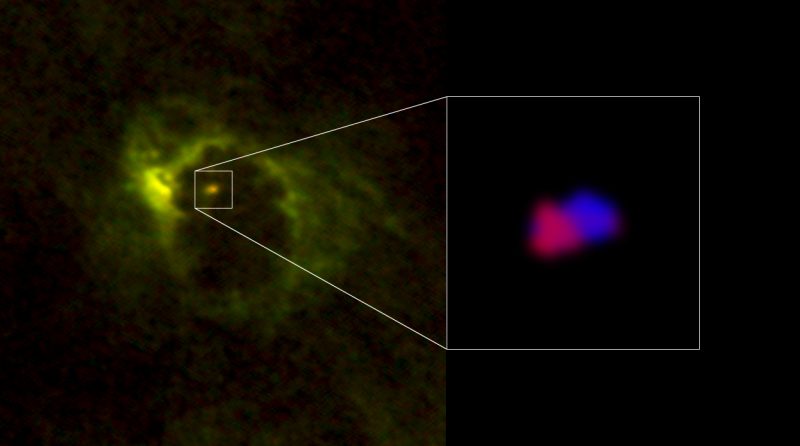ALMA telescope spies a supermassive black holes spinning disk (earthsky.org)
By Deborah Byrd in Space | February 17, 2018
For decades, astronomers have spoken of galaxies with supermassive black holes at their cores. Now they say they’ve clearly confirmed one such hole’s encircling, dusty, spinning disk of gas.
Astronomers have used the ALMA telescope in northern Chile to image a rotating dusty gas torus around an active supermassive black hole in a distant galaxy. The galaxy is M77, a relatively nearby barred spiral, located some 47 million light-years away in the direction of the southern constellation Cetus the Whale. The astronomers were able to view a compact gaseous structure with a radius of 20 light-years at this galaxy’s core. And, they found, the compact structure is spinning around the black hole, as theories have suggested it should. Astronomers have been talking for decades about supermassive black holes – with compact, gaseous disks around them – at the cores of galaxies, but, according to ALMA:
… this is the first time one has been confirmed so clearly.
Masatoshi Imanishi of the National Astronomical Observatory of Japan led this research, which was published February 1, 2018, in peer-reviewed
Astrophysical Journal Letters.
According to modern astronomers, almost all galaxies – including our Milky Way – have supermassive black holes in their cores. The more massive the galaxy, the more massive the central black hole. But, ALMA explained, astronomers remained puzzled:
This sounds reasonable at first, but host galaxies are 10 billion times bigger than the central black holes; it should be difficult for two objects of such vastly different scales to directly affect each other. So how could such a relation develop?
A team of astronomers used the ALMA telescope to peer toward M77, aiming to solve the puzzle. ALMA said:
The central region of M77 is an “active galactic nucleus,” or AGN, which means that matter is vigorously falling toward the central supermassive black hole and emitting intense light. AGNs can strongly affect the surrounding environment, therefore they are important objects for solving the mystery of the co-evolution of galaxies and black holes.

***
more:
http://earthsky.org/space/m77-spinning-dusty-disk-supermassive-black-hole-alma
